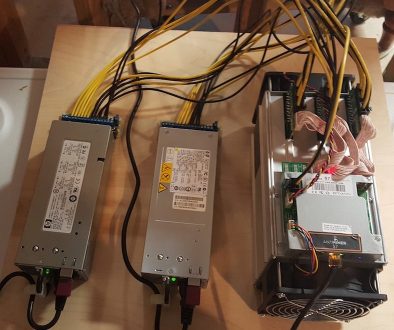Non-Stop Wifi Access with IoT and Blockchain Technology
Wouldn’t you like to have wifi access all the time, wherever you go? I sure would.
Snowcrash is one of the best SF books ever created. 25 years ago Neal Stephenson described Avatars and daemons interacting in the Virtual Reality Metaverse with mobile systems using lasers to paint user’s retinas to get them totally immersed in the action.
As amazing as that idea was back in the early 90’s, I keep coming back to something else that was almost taken for granted in the story.
Everywhere Hiro Protagonist, the “Last of the Freelance Hackers” and “Greatest Sword Fighter in the World,” went, his computer found and connected to local high bandwidth wireless network connectivity. That’s real science fiction right there!
Unfortunately, today getting connected to WIFI involves a tedious process of finding an SSID, getting a WPA2 code, accepting a splash page, being subject to bandwidth and port blocking limitations, and the overall friction of dealing with people. Of course 4G works well in many places, but it’s not fiber in the ground fast, and it’s expensive.
TradeWireless — I just made this up, maybe someone will develop it
So here’s an idea that uses automated machine activity (sometimes called Internet of Things) and Blockchain. Call this system TradeWireless. It’s purpose would be to get you on any WIFI network available without any manual intervention.
Components are TradeWireless WIFI routers (nodes), TradeWireless applications on mobile devices (clients), and a new blockchain implementation called TradeWirelessCoin to manage it all. The TradeWireless client application would have a nice interface to set access policy. Policy could include specifications on maximum price per minute, bandwidth, available ports, security, etc.. It would also have override and priority features.
If I needed to conduct a high quality video conference for a big deal, I could set my TradeWireless client application stops to the max, kind of like Uber surge pricing, and get things done. If I wanted my daughter to have internet access on her iPod, I could set a restrictive, secure, and cheap policy and send her on her way.
Anyone could buy a TradeWireless node and plug it into their own network. They’d set policy on how they would provide internet to TradeWireless customers in the router setup panel. TradeWireless clients would be able to cruise around and get connected wherever they were automatically as long as the TradeWireless node they were using matched up with their client policy.
If the node operator charged too much, or was too restrictive, the client wouldn’t connect. There could also be multiple levels of policy and pricing, and the client minimum policy would be matched up with the corresponding node policy.
Just like there are small business owners setting up ATM’s in every available spot, there would be new small business owners setting up TradeWireless nodes wherever there was no network access. At some point there would be blanket coverage, with competition bringing down the price of TradeWireless access.
All transactions would be done in TradeWirelessCoin, a new cryptocurrency built on top of Ethereum or Bitcoin for just this purpose. There would be an easy way to buy TradeWirelessCoin with your credit card. Most people would be buyers, some would be sellers, there would be TradeWirelessCoin speculators, it would have a whole cryptocurrency ecosystem.
The business that develops this TradeWireless Intellectual Property could make money licensing the technology to people that would make the client apps and WIFI router nodes. They could use some of this money to pay for developers to keep the TradeWireless project moving forward. There’s no reason for them to build the hardware — it could be licensed by companies like Netgear who already make consumer wireless routers.
Situations Where IoT and Blockchain technology work together
That’s just one idea for how the Internet of Things and Blockchain can be used to solve problems that people would be willing to pay money for. There’s lots of others. Just look for situations where:
- People are being inconvenienced but it is not worth the expense to manually provide access or priority. The TradeWireless project is an example of that.
- Simultaneous negotiation is required between hundreds of automated systems. For example, if we have self-driving automobiles and someone needs to get somewhere in a hurry, they could punch the priority button on their car, and allocate money to get there as fast as possible. If I was late to close a big deal, I’d pay lots of money to all the other cars to get them to move out of the way and give me green lights all the way to my destination.
I like Neal Stephenson’s book Diamond Age even better than Snowcrash. But not just because of the ideas of cryptocurrency and nanotechnology that he builds the story around. What I would really like is the Young Lady’s Illustrated Primer — now that would change the world.


